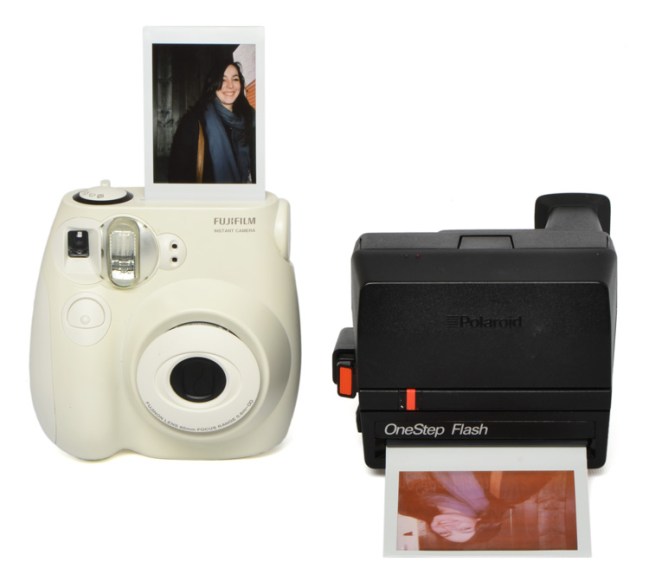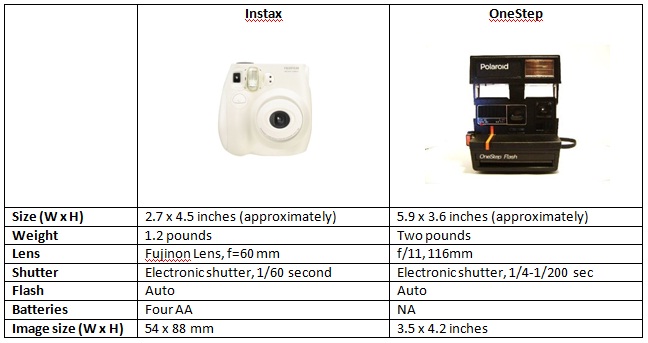 It’s difficult to find a person who regularly prints their own pictures. Digital cameras have all but replaced the need for one-hour photo kiosks, and sites like Flickr and Facebook have become the medium for photo viewing. So it’s only natural that the already niche instant-print camera audience is being whittled away at by technology. Polaroid is resurrecting its brand with a new dual-function “instant print meets digital” device, but there’s something about the original that just won’t die. And of course, the innovator’s exit from the photo scene opened up the market for instant-print competitors, including one Fujifilm Instax Mini 7S, which hit the U.S. market in 2009.
It’s difficult to find a person who regularly prints their own pictures. Digital cameras have all but replaced the need for one-hour photo kiosks, and sites like Flickr and Facebook have become the medium for photo viewing. So it’s only natural that the already niche instant-print camera audience is being whittled away at by technology. Polaroid is resurrecting its brand with a new dual-function “instant print meets digital” device, but there’s something about the original that just won’t die. And of course, the innovator’s exit from the photo scene opened up the market for instant-print competitors, including one Fujifilm Instax Mini 7S, which hit the U.S. market in 2009.
Instant-print might seem like a gimmicky, tired craft, but there’s something undeniably mesmerizing about watching your image develop right before your eyes. Here we take a look at how the original Polaroid OneStep Flash measures up to Fuji’s comparatively new Instax Mini.
Design
As always, this depends on opinion. There are tons of old Polaroid cams out there that vary in design, but we were using one the older models. There’s no denying it’s bulky, and not the smoothest operater on the block. Of course, part of a OneStep’s lure is that it’s truly vintage, and with that come some creaky bones.
The Instax is anything but slim – but in comparison to the OneStep, it’s miniature. Fujifilm clearly tries to create a sleek machine, and deserves some credit for the attempt. Still, if you’re in the market for an instant cam, you’re likely prepared for its included heft.

Winner: Draw
Photo Quality
We tried out the Instax and the OneStep in a few different settings to compare how they measure up outdoors, indoors, and maybe most importantly, shooting people. We were using Polaroid 600 instant film from 2004, so it has to be assumed the quality is going to suffer. Unfortunately, it did even more than we projected. The Instax film, on the other hand, was impressive. Hue was more natural, there was more definition, and even against the opaque Portland background, photos were only minimally blown out. Of course, Instax images are less than half the size of the OneStep’s, a major caveat.

Winner: Instax
Film
Polaroid stopped producing film years ago, which obviously adds a degree of challenge to the process. And of course, you’re stuck with old film at that point. If you’re willing to shell out some serious coin for quality Polaroids, there’s always the Impossible Project. The Impossible Project is a group of former Polaroid employees who saved the very last factory in 2008 and have since been creating film for the instant cam’s remaining users.
The film is lovingly created by the team, but keep in mind that eight prints will run you $20 on average. This means that most people will be anything but carefree when it comes to taking Polaroids. It sort of defeats the point: If you’re taking artistic, extremely thought-out photos, you’re probably going to use a DSLR.
Still, it’s a dying art and one that deserves a place in the hearts and pockets of people willing to pay for and hold onto the endangered film. Of course, you can also buy outdated film for varying prices on eBay and Amazon, just be ready to hunt for it.
As for the Instax, $20 will usually get you somewhere around 20 photos, and you can find good deals on Amazon. As it stands, there is only one type of film you can buy, no black-and-white or sepia options. Maybe it will take until Fujifilm terminates the Instax for a devoted team of film lovers to create its own lineup.
Winner: Instax



